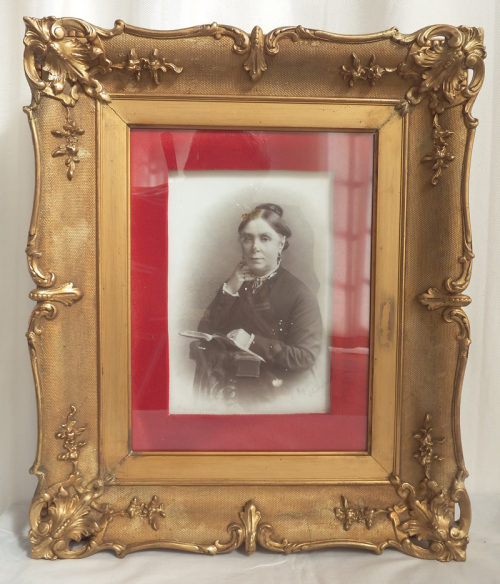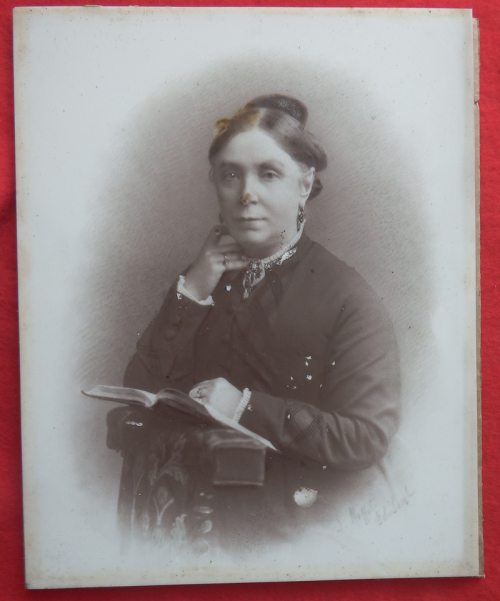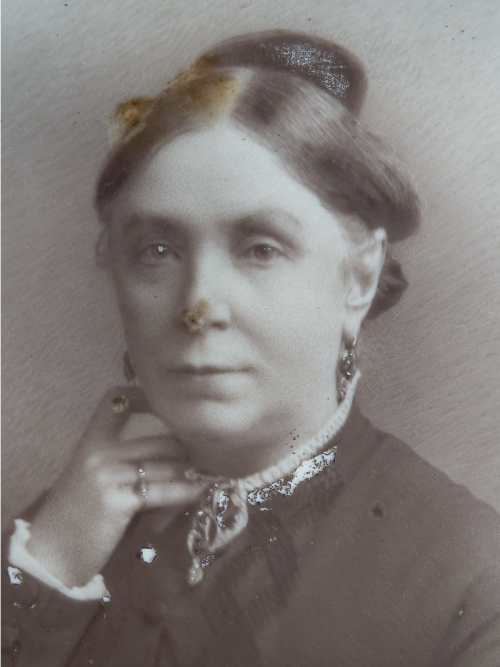Rare Opalotype signed photograph by John Moffat Circa 1860-1865(?) Ref. AR/10
Check my rate
| Main centres: | 1-3 business days |
| Regional areas: | 3-4 business days |
| Remote areas: | 3-5 business days |
Product information
Rare ‘Opalotype’ signed photograph by John Moffat Circa 1860-1865(?) Ref. AR/10
 Opalotype or Opaltype is an early technique of photography, sometimes referred to as ‘milk glass positives’. Similar to the daguerrotype technique which was invented by a Frenchman, Louis-Jacques- Mande Daguerre in 1839, the Opalotype technique was developed and patented in 1857 by Glover and Bold of Liverpool and was a common technique by the 1860’s. Although the effect of the opalotype has been compared to watercolours or pastel drawings due to its beautiful ‘soft’ appearance and delicacy of detail, it was not very popular and very few examples are found. Opalotypes used wet collodion and a silver gelatine on a sheet of white translucent glass. Expensive to produce and messy (it had to be used whilst still wet) and very delicate – the image could be easily removed by wiping the glass – it was likely to be too sensitive a process for the time.
Opalotype or Opaltype is an early technique of photography, sometimes referred to as ‘milk glass positives’. Similar to the daguerrotype technique which was invented by a Frenchman, Louis-Jacques- Mande Daguerre in 1839, the Opalotype technique was developed and patented in 1857 by Glover and Bold of Liverpool and was a common technique by the 1860’s. Although the effect of the opalotype has been compared to watercolours or pastel drawings due to its beautiful ‘soft’ appearance and delicacy of detail, it was not very popular and very few examples are found. Opalotypes used wet collodion and a silver gelatine on a sheet of white translucent glass. Expensive to produce and messy (it had to be used whilst still wet) and very delicate – the image could be easily removed by wiping the glass – it was likely to be too sensitive a process for the time.
John Moffat (1819-1894) was a leading photographer of the day, and, through my research on Moffat, it appears he opened his first studio in Edinburgh in 1853. By 1861 he had moved to 103, Princes Street, and then at 125 Princes Street. Originally a portrait engraver, through his interest in photography, Moffat became a professional photographer by 1853 and was known as a ‘wet plate collodion worker’ - hence the Opalotype. Examining John Moffat’s extensive photographic history, I have only found two other Opalotypes, one dated in 1864 and one of Robert Louis Stevenson (aged 3 years – he was born in 1850) and an early Daguerrotype dating to 1856. Moffat appears to have dropped the Opalotype technique in favour of ’Carte de Visite’, photographs. This was an invention by another Frenchman, Andre Adolphe Disderi in 1854 and was a type of small photograph usually made of an albumen print which was a thin paper photograph mounted on a thicker paper card. The Carte de Visite became an overnight success in 1859. Moffat, spoke fluent French and kept abreast of all new developments, and, no doubt, knew about this technique. His ‘carte de visite’ photos (on record) appear from 1861 onwards. I could not find any images by Moffat or references to any Opalotypes taken by him after this date. He was an exceptional photographer, employing over 20 assistants by 1887 and his business continued to prosper for over 100 years! A book on his life ‘Pioneer Scottish Photographic Artist’ has been published, giving a full account of his life and photos. Examples of his work can be seen at the National Museum of Photography, the Fox Talbot Museum, the National Portrait Gallery, the Scottish National Portrait Gallery, the Royal Photographic Society and the Edinburgh Public Library.


The Opalotype is in a good overall condition, although there is a small smudge on the dress and some slight marks to the nose and upper dress. Signed ‘J. Moffat, Edinburgh’, the Opalotype is roughly 21.5cm x 26cm and is set in an old, ornate, gilded frame. The frame, in fair condition with some obvious repairs, measures 50cm x 41cm. The Lady, name unknown, is shown, standing in front of, what I think is, a ‘prie dieu’ chair, upon which rests a book (possibly a bible). She is shown wearing four rings as well as a pair of earrings.
This is an incredible piece showing a very early photographic process, and, not only do we know who the photographer was, it is also signed by him.